It looks like you're using an Ad Blocker.
Please white-list or disable AboveTopSecret.com in your ad-blocking tool.
Thank you.
Some features of ATS will be disabled while you continue to use an ad-blocker.
share:
Many people think that the planets line up well. They do not. occasionally there can be an alignment as will happen on June 5th, 2012. The Sun, Venus,
and Earth line up. When that happens Venus will be seen to pass in front of the Sun just as it did in 2004. It's over a century to the next transit
after the 2012 event.
Anyone expecting something interesting to happen? You can learn more about the transit of 2012 here:
transitofvenus.nl...
eclipse.gsfc.nasa.gov...
That's the science now for other ideas.
www.december212012.com...
2012codex.com...
Anyone think that these other stories of 2012 events have any chance of being correct?
Anyone expecting something interesting to happen? You can learn more about the transit of 2012 here:
transitofvenus.nl...
eclipse.gsfc.nasa.gov...
That's the science now for other ideas.
www.december212012.com...
It was during this transit that Cortez invaded and conquered Mexico. The Aztec priests predicted this period would be fraught with danger and this is why Montezuma failed to meet the challenge the Conquistadors posed.
I examined the next Venus Transit, which took place in 1631-39. I found that sunspots stopped appearing for 70 years immediately following this cycle.
2012codex.com...
Mayan prophecy states that the renewed world of a new consciousness will be born on the occasion of the Venus passage across the Sun
The 2012 transit will cause the pacific plate to rock. Huge earthquake activity will ensue, culminating with an eruption in Yellowstone and a Tsunami which will flood japan. This will happen around the fall equinox.
Anyone think that these other stories of 2012 events have any chance of being correct?
reply to post by stereologist
Is there any correlation between the transit of Venus and Orion's belt? I remember seeing something on the History channel talking about the The Book of the Dead in Egypt and how in it there's something referring to the transit of Venus and some type of cataclysm. I'm not exactly sure.
Is there any correlation between the transit of Venus and Orion's belt? I remember seeing something on the History channel talking about the The Book of the Dead in Egypt and how in it there's something referring to the transit of Venus and some type of cataclysm. I'm not exactly sure.
edit
on 10/17/2011 by IEtherianSoul9 because: (no reason given)
reply to post by stereologist
Very interesting thread and info. thanks
I never knew about the 70 years without sunspots. What effect if any does this have on Earth's weather?
Where these years colder, or warmer. Just asking, but will research it when i get the time!
EDIT: I should have asked about the natural disasters of 1631-39!
On having a spair five minutes I came across this
Wiki Link
will add more later!
Very interesting thread and info. thanks
I never knew about the 70 years without sunspots. What effect if any does this have on Earth's weather?
Where these years colder, or warmer. Just asking, but will research it when i get the time!
EDIT: I should have asked about the natural disasters of 1631-39!
On having a spair five minutes I came across this
Vesuvius entered a new phase in December 1631, when a major eruption buried many villages under lava flows, killing around 3,000 people. Torrents of boiling water were also ejected, adding to the devastation. Activity thereafter became almost continuous
Wiki Link
will add more later!
edit on 17/10/11 by boo1981 because: add link
Originally posted by boo1981
reply to post by stereologist
Very interesting thread and info. thanks
I never knew about the 70 years without sunspots. What effect if any does this have on Earth's weather?
Where these years colder, or warmer. Just asking, but will research it when i get the time!
They recently discovered that a lull in solar activity causes colder temperatures on the surrounding planets.
Give me a second and I'll edit this post with a link.. They believe this was a major reason for the mini ice age.
**** I cannot add a link to this article because it's a pay service. This was originally revealed in the 9/15/10 issue of Science.
edit
on 17-10-2011 by TinkerHaus because: (no reason given)
reply to post by stereologist
That doesn't make any sense that the transit would stop sun spots from appearing, how could any 2 planets coming into alignment cause the physicality of the sun to change. Planets line up with the sun often and have for 5 billion years or so.
That doesn't make any sense that the transit would stop sun spots from appearing, how could any 2 planets coming into alignment cause the physicality of the sun to change. Planets line up with the sun often and have for 5 billion years or so.
reply to post by Wheelindiehl
I agree that I do not believe in any of this other than an alignment happens on a regular basis, but my question is: what do other people think of these Venus claims?
Is there some way to decide if these claims are worth considering? Please speak up.
I agree that I do not believe in any of this other than an alignment happens on a regular basis, but my question is: what do other people think of these Venus claims?
Is there some way to decide if these claims are worth considering? Please speak up.
edit on 17-10-2011 by stereologist because: Asking for more
input
Ups, wrong button ..
What's up ..
Ok I post something not good to see empty post ..
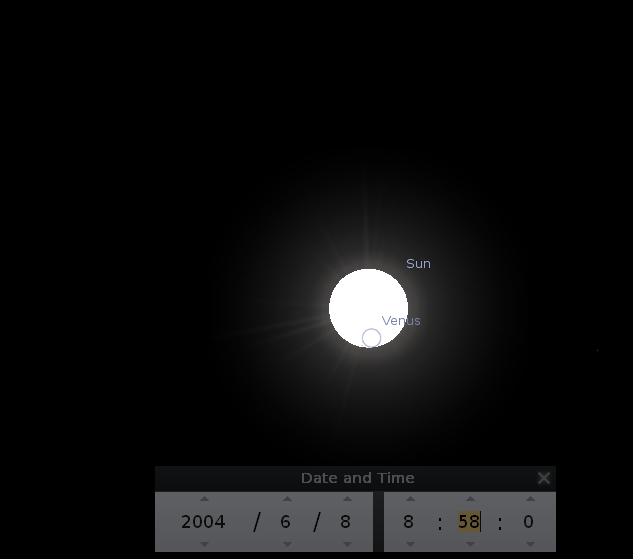
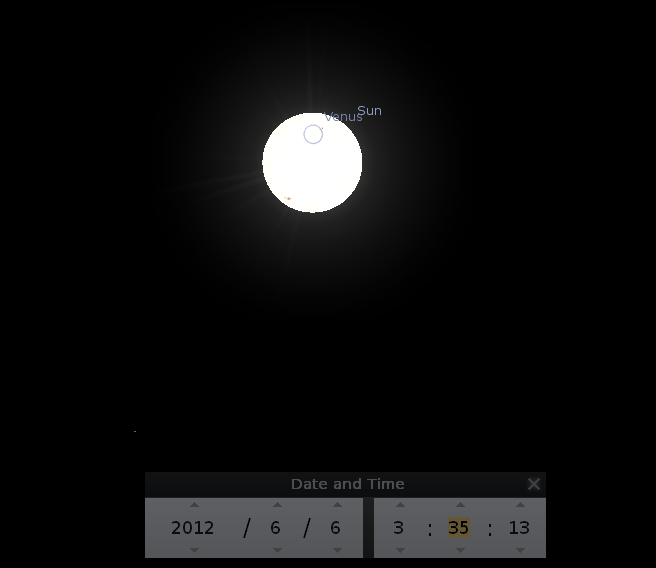
Very big possibility for movement of tectonic plates and strong earthquake in this days ..
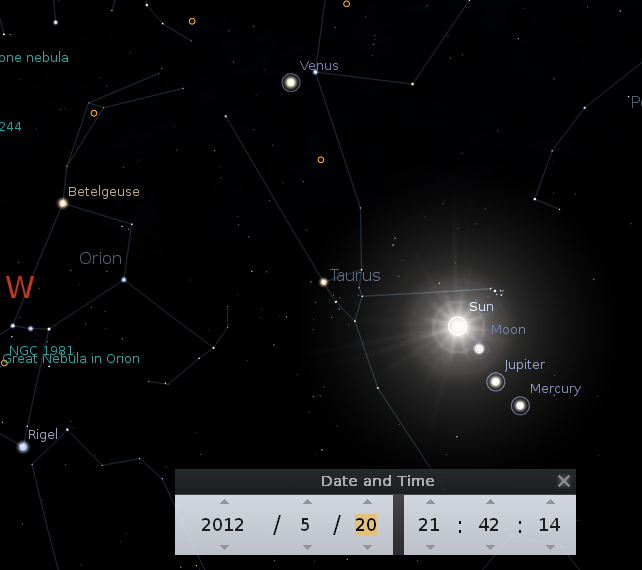
Very strong Sun activity to March 11 when very powerful geomagnetic storm make movement and pressure on tectonic plate ..
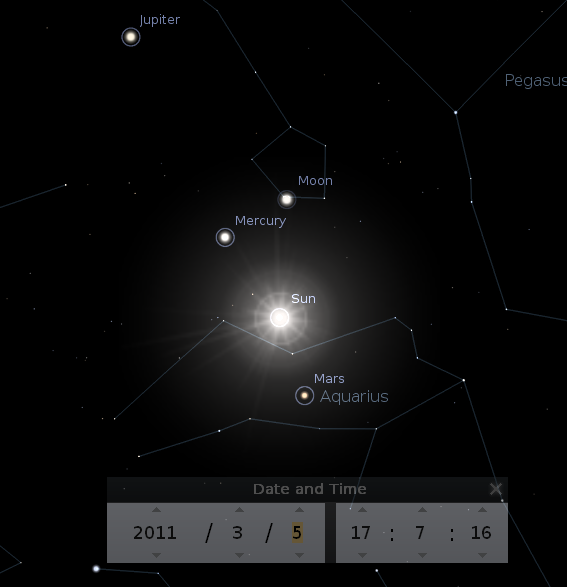
February 27, 2010 Maule, Chile 2010 Chile earthquake 8.8
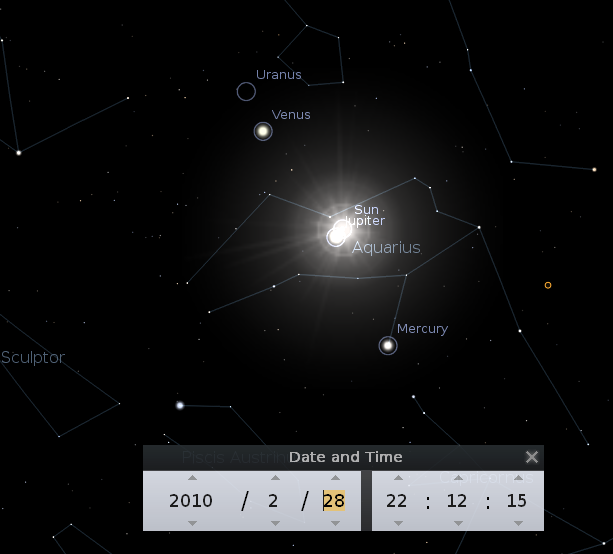
May 22, 1960 Valdivia, Chile 1960 Valdivia earthquake 9.5
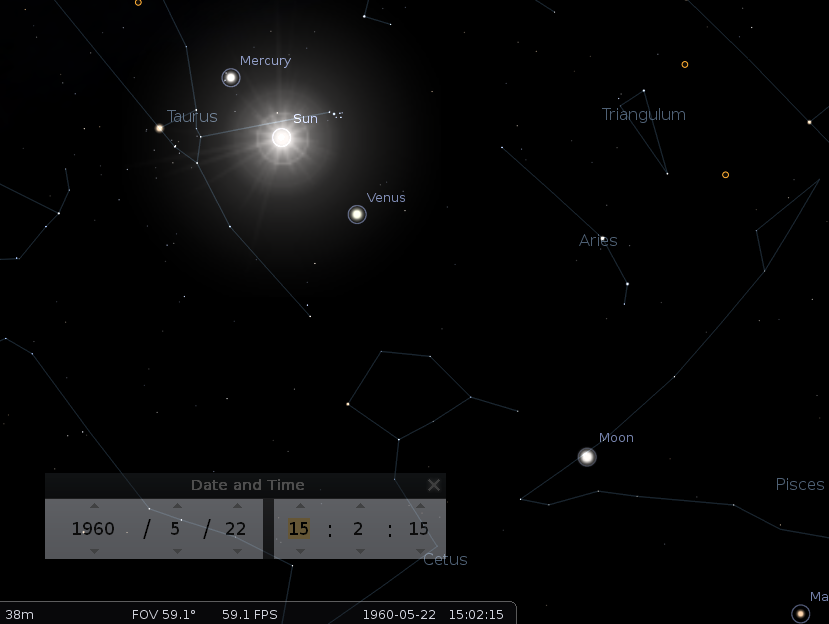
January 26, 1700 Pacific Ocean, USA and Canada 1700 Cascadia earthquake 8.7–9.2 (est.)
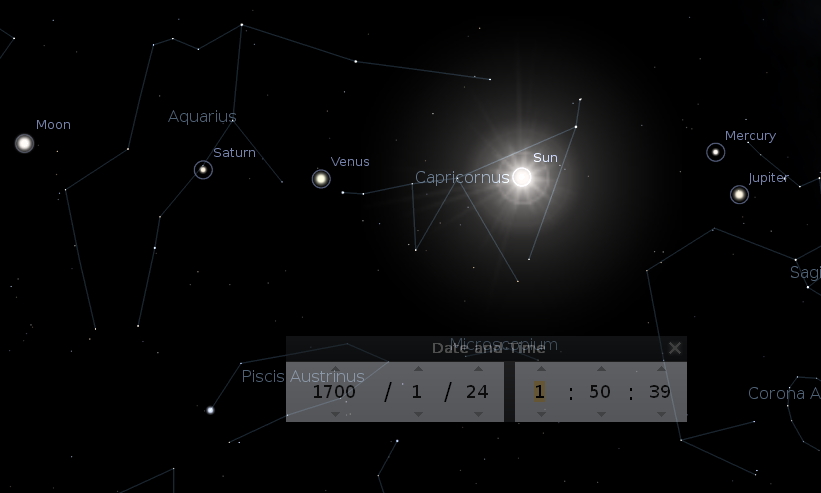
What's up ..
Ok I post something not good to see empty post ..


Very big possibility for movement of tectonic plates and strong earthquake in this days ..

Very strong Sun activity to March 11 when very powerful geomagnetic storm make movement and pressure on tectonic plate ..

February 27, 2010 Maule, Chile 2010 Chile earthquake 8.8

May 22, 1960 Valdivia, Chile 1960 Valdivia earthquake 9.5

January 26, 1700 Pacific Ocean, USA and Canada 1700 Cascadia earthquake 8.7–9.2 (est.)

edit on 17-10-2011 by Dalke07 because: (no reason given)
reply to post by stereologist
There was also...
Link
There was also...
The big freeze in 1635 in the UK.
1636: Severe drought, rainless for months UK.
1638: Not linked so much to winter, but tornadoes were reported in the South West UK.
Link
Originally posted by stereologist
Many people think that the planets line up well. They do not. occasionally there can be an alignment as will happen on June 5th, 2012. The Sun, Venus, and Earth line up. When that happens Venus will be seen to pass in front of the Sun just as it did in 2004. It's over a century to the next transit after the 2012 event.
Anyone expecting something interesting to happen? You can learn more about the transit of 2012 here:
transitofvenus.nl...
eclipse.gsfc.nasa.gov...
That's the science now for other ideas.
www.december212012.com...
It was during this transit that Cortez invaded and conquered Mexico. The Aztec priests predicted this period would be fraught with danger and this is why Montezuma failed to meet the challenge the Conquistadors posed.
I examined the next Venus Transit, which took place in 1631-39. I found that sunspots stopped appearing for 70 years immediately following this cycle.
2012codex.com...
Mayan prophecy states that the renewed world of a new consciousness will be born on the occasion of the Venus passage across the Sun
The 2012 transit will cause the pacific plate to rock. Huge earthquake activity will ensue, culminating with an eruption in Yellowstone and a Tsunami which will flood japan. This will happen around the fall equinox.
Anyone think that these other stories of 2012 events have any chance of being correct?
I wonder how many pics we'll get of venus in front of the sun that will somehow become a UFO. Or a question. Whats that in front of the sun? Must be Nibiru.
Originally posted by IEtherianSoul9
reply to post by stereologist
Is there any correlation between the transit of Venus and Orion's belt? I remember seeing something on the History channel talking about the The Book of the Dead in Egypt and how in it there's something referring to the transit of Venus and some type of cataclysm. I'm not exactly sure.edit on 10/17/2011 by IEtherianSoul9 because: (no reason given)
Speaking of Orion's Belt... where is it? I used to be able to find it in the sky, just about whenever I thought to look.
Also... is Venus the bright blue-white light in the sky to the East after sunset on the East Coast?
reply to post by new_here
Orion can be easily seen a couple of hours before sunrise. I was looking at it just before sunrise Sunday morning. The nearby Moon posed no problems in seeing the constellation.
The object you are looking at is Jupiter. Venus was a reasonable guess based on how bright the object is. The problem is that Venus is closer to the Sun that the Earth. Therefore, Venus always appears towards the Sun either close to the rising Sun or setting Sun. What you are seeing is away from the Sun. The only thing that could be is Jupiter. Try looking at Jupiter with binoculars and you should be able to see a line of dots close to Jupiter. These are the larger moons of Jupiter. You can see up to 4 of the Galilean moons with just binoculars.
Speaking of Orion's Belt... where is it? I used to be able to find it in the sky, just about whenever I thought to look.
Also... is Venus the bright blue-white light in the sky to the East after sunset on the East Coast?
Orion can be easily seen a couple of hours before sunrise. I was looking at it just before sunrise Sunday morning. The nearby Moon posed no problems in seeing the constellation.
The object you are looking at is Jupiter. Venus was a reasonable guess based on how bright the object is. The problem is that Venus is closer to the Sun that the Earth. Therefore, Venus always appears towards the Sun either close to the rising Sun or setting Sun. What you are seeing is away from the Sun. The only thing that could be is Jupiter. Try looking at Jupiter with binoculars and you should be able to see a line of dots close to Jupiter. These are the larger moons of Jupiter. You can see up to 4 of the Galilean moons with just binoculars.
reply to post by Dalke07
Did you check the earthquakes for the date in 2004?
The biggest was a 5.9
USGS June 8 2004
Very big possibility for movement of tectonic plates and strong earthquake in this days ..
Did you check the earthquakes for the date in 2004?
The biggest was a 5.9
USGS June 8 2004
Originally posted by stereologist
reply to post by new_here
Speaking of Orion's Belt... where is it? I used to be able to find it in the sky, just about whenever I thought to look.
Also... is Venus the bright blue-white light in the sky to the East after sunset on the East Coast?
Orion can be easily seen a couple of hours before sunrise. I was looking at it just before sunrise Sunday morning. The nearby Moon posed no problems in seeing the constellation.
The object you are looking at is Jupiter. Venus was a reasonable guess based on how bright the object is. The problem is that Venus is closer to the Sun that the Earth. Therefore, Venus always appears towards the Sun either close to the rising Sun or setting Sun. What you are seeing is away from the Sun. The only thing that could be is Jupiter. Try looking at Jupiter with binoculars and you should be able to see a line of dots close to Jupiter. These are the larger moons of Jupiter. You can see up to 4 of the Galilean moons with just binoculars.
Hey thanks, stereologist!
Now here's a fun game, boys and girls... click on this link, then return here for instructions.
Link
1. Choose Earth in the "drop-down box" named "Center:" (Creates a sort off 'geocentric' viewpoint.)
2. Under "Orbit:" choose "No Orbits." (Just takes away the lines.)
3. Uncheck "Object Label" b/c it gets in the way, and it's not about YU55 anyway.
4. Zoom in with the zoom bar provided, but make sure Venus and Mars are still visible.
5. Click the >> symbol to move forward in time, and...
6. Watch how every time Venus gets close to Earth, it APPEARS to be attracted, like a magnet, like it doesn't want to move on. (Mercury and Mars' movements are smooth as glass but Venus looks rather jumpy looking from this perspective.)
Not saying it means anything, just found it interesting. Probably has something to do with 'retrograde motion?' Anyway, worth a look if you have the time!
I gave it a shot and if I watched Venus and the Sun and tried to avoid the Earth everything looks line. It is the POV that leads to the perceived odd
motion. It's a great example of the problems associated with describing the solar system from a geocentric viewpoint.
I am interested in collecting more claims about the effects that the transit might cause.
Anyone else find anything?
Anyone else find anything?
reply to post by intergalactic fire
Wrong picture my friend is not even close situation ..
Is not so simple ..
Venus transit is not main reason why I said that ..
You can read here ..
www.abovetopsecret.com...
Wrong picture my friend is not even close situation ..
Is not so simple ..
Venus transit is not main reason why I said that ..
You can read here ..
www.abovetopsecret.com...
edit on 18-10-2011 by Dalke07 because: (no reason given)
In the OP is listed a few things I found that people claimed to be connected to the alignment of the Sun and Venus and Earth. I am going to provide a
quite itemization of those claims here.
1. Claims of strange happenings in Mexico during the conquest by Cortez 1518-1526.
2. Sunspots stopped immediately after 1631-39.
3. A new consciousness will happen at the time of the transit.
4. The transit will cause "hue earthquake activity"
5. Yellowstone will erupt.
6. Japan will be flooded by a tsunami
I realize that there are large problems with the first post such as
That quake happened in 1964, not the previous year.
There are also problems with the second post such as
Does anyone have anything to add to this list of associations with Venus transits?
1. Claims of strange happenings in Mexico during the conquest by Cortez 1518-1526.
2. Sunspots stopped immediately after 1631-39.
3. A new consciousness will happen at the time of the transit.
4. The transit will cause "hue earthquake activity"
5. Yellowstone will erupt.
6. Japan will be flooded by a tsunami
I realize that there are large problems with the first post such as
If the 9.2 quake that hammered Alaska last year had ...
That quake happened in 1964, not the previous year.
There are also problems with the second post such as
Venus's path forms a planetary loop, lasting for just 6 months in any one year, which takes it across the top of the constellation of Orion.
Does anyone have anything to add to this list of associations with Venus transits?
reply to post by stereologist
SOme interesting read end videos here ..
Peace ..
Inanna
inanna.virtualave.net...
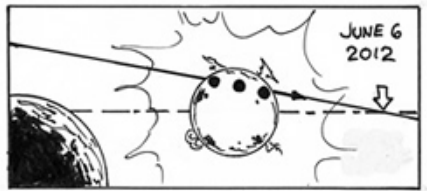
www.classicalastronomy.com...
Earth and Venus Lightning: Similar Mechanisms On the Two Planets
www.sciencedaily.com...
www.abovetopsecret.com...
www.thunderbolts.info...
SOme interesting read end videos here ..
Peace ..
Inanna
inanna.virtualave.net...
Conjunctions, and will have fallen back another two days from the date of the 2004 event. Thus, this Inferior Conjunction will occur on June 6, 2012. On this date, Venus is on the north side of the Descending Node, but still very near to the Plane of the Ecliptic.
Venus is close enough to the Ecliptic so that another transit will occur. At this time, Venus will cross the northern limb of the Sun, as it approaches the Descending Node.
After the next eight year cycle, Venus will be too far from the node at Inferior Conjunction, and will pass to the north of the Sun, lost in the Sun's glare. After that, there won't be another transit for 113 years, until December 13, 2117, when an Inferior Conjunction occurs on the other side of the Sun at the Ascending Node. Transits are very rare events and we are a privileged generation to have not one but two occur within our time.

www.classicalastronomy.com...
Earth and Venus Lightning: Similar Mechanisms On the Two Planets
ScienceDaily (Sep. 23, 2010) — Despite the great differences between the atmospheres of Venus and Earth, scientists have discovered that very similar mechanisms produce lightning on the two planets. The rates of discharge, the intensity and the spatial distribution of lightning are comparable, thus scientists hope to be able to better understand the chemistry, dynamics and evolution of the atmospheres of the two planets.
www.sciencedaily.com...
www.abovetopsecret.com...
www.thunderbolts.info...
edit on 19-10-2011 by Dalke07 because: (no reason given)
Here is a list of the transit dates that I could easily find.
May 24, 1032
Nov 23, 1396
May 25, 1518
May 23, 1526
Dec 7, 1631
Dec 4, 1639
Jun 6, 1761
Jun 3, 1769
Dec 9, 1874
Dec 6, 1882
Jun 8, 2004
Jun 6, 2012
May 24, 1032
Nov 23, 1396
May 25, 1518
May 23, 1526
Dec 7, 1631
Dec 4, 1639
Jun 6, 1761
Jun 3, 1769
Dec 9, 1874
Dec 6, 1882
Jun 8, 2004
Jun 6, 2012
new topics
-
Thanking a rosemary plant
General Chit Chat: 40 minutes ago -
Unidentified Flying Objects Over U.S. Military Bases in Northeast UK, as of roughly 11 a.m. CST.
Aliens and UFOs: 1 hours ago -
Holy Cow! Erm...Six Legged Turkey!!
World Sports: 5 hours ago -
Ben Habib has Left Reform UK
Regional Politics: 8 hours ago -
Turkey Day Rhyme…
Short Stories: 8 hours ago -
Can someone please translate Biden's speech?
US Political Madness: 9 hours ago -
NIH Chief Confesses COVID Initiatives Were "Completely Made Up " OMG Investigates
Health & Wellness: 10 hours ago
top topics
-
NIH Chief Confesses COVID Initiatives Were "Completely Made Up " OMG Investigates
Health & Wellness: 10 hours ago, 9 flags -
Vladimir Putin's speech at the meeting of the CSTO Collective Security Council
World War Three: 13 hours ago, 8 flags -
Can someone please translate Biden's speech?
US Political Madness: 9 hours ago, 8 flags -
Unidentified Flying Objects Over U.S. Military Bases in Northeast UK, as of roughly 11 a.m. CST.
Aliens and UFOs: 1 hours ago, 6 flags -
Awesome Dip Recipe
Food and Cooking: 13 hours ago, 5 flags -
Turkey Day Rhyme…
Short Stories: 8 hours ago, 5 flags -
Ben Habib has Left Reform UK
Regional Politics: 8 hours ago, 4 flags -
Holy Cow! Erm...Six Legged Turkey!!
World Sports: 5 hours ago, 2 flags -
Thanking a rosemary plant
General Chit Chat: 40 minutes ago, 0 flags
active topics
-
Why isn't Psychiatry involved?
Social Issues and Civil Unrest • 17 • : lilzazz -
Unidentified Flying Objects Over U.S. Military Bases in Northeast UK, as of roughly 11 a.m. CST.
Aliens and UFOs • 2 • : Texastruth2 -
Traveling the world with no passport
Social Issues and Civil Unrest • 12 • : andy06shake -
The Party of Peace - Trump Cabinet Picks Targeted with Death Threats
US Political Madness • 46 • : chr0naut -
Thanking a rosemary plant
General Chit Chat • 1 • : nugget1 -
V.P. Kamala Harris releases a video and nobody understands why
US Political Madness • 91 • : xuenchen -
Happy Thanksgiving to ATS
General Chit Chat • 14 • : randomtangentsrme -
Holy Cow! Erm...Six Legged Turkey!!
World Sports • 3 • : Flyingclaydisk -
Vladimir Putin's speech at the meeting of the CSTO Collective Security Council
World War Three • 62 • : annonentity -
Awesome Dip Recipe
Food and Cooking • 6 • : Flyingclaydisk
